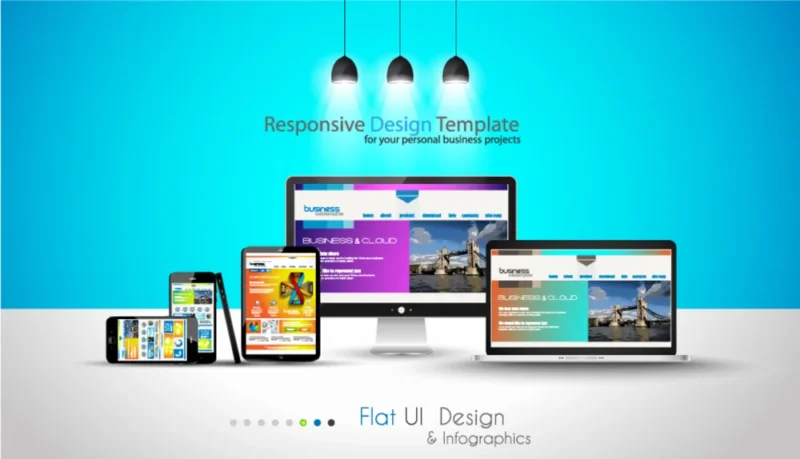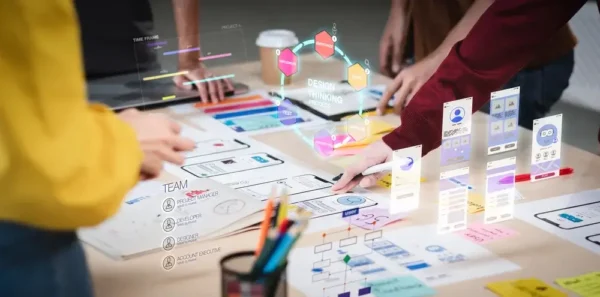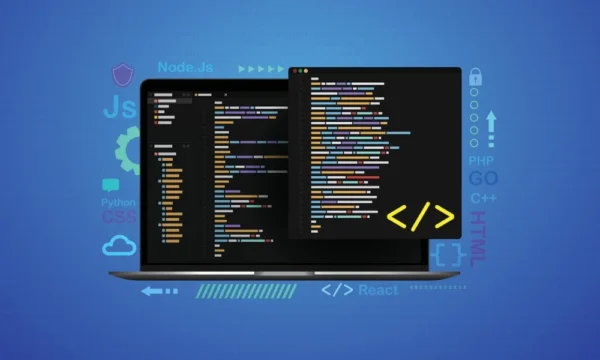Business enterprise mobile apps development are the new elements that continue to shape the fate of firms in the present days.
Sustainable Web Design Trends: The Future of Eco-Friendly Digital Design

Introduction to Sustainable Web Design
Sustainable web design trends has risen to the challenge as a significant trend and approach to reducing the websites and digital services’ negative effects on the climate. As global citizens grow more concerned with climate change, resource scarcity, and other sustainability matters, the place of digital sustainability is evidenced. Internet use is dependent on electricity, which is known to be a carbon-intensive instrument in the contemporary world. The principles of energy efficiency and Web performance are now being studied by Web designers and developers to allow the delivery of an excellent user experience with minimal energy consumption. That is why we need to attend to the question of what it actually means to create a sustainable website.
In essence, sustainable web design aims at minimizing energy utilization within web platforms through proper coding, appropriate media, and green hosting. That’s taking into account users, their environments, and even the efficiency of the servers required, not to mention the environment. As people become more aware of the issues, the demand for sustainable web solutions is dire and is putting the web design industry on the right path.
Table of Contents
Why Sustainable Web Design Trends Matters
There is an extensive influence of the digital technology in the environment, but mostly it is unrevealed. The servers on which information of sites and which Web delivers it to individuals are power-hungry; the carbon price tag of Web equals to some major sectors. Web design contributes highly to this since poorly designed websites are normally demanding in terms of processing power as well as energy.
Every time a user goes through a website, information is passed through from servers, whereby many depend on fossil energy sources. When the traffic on the web increases in magnitude, so does the energy that is needed to maintain the web structures. We have an opportunity to create change and reduce the scale of carbon emissions and energy consumption by making sustainable web design choices that address climate change.
Core Principles of Sustainable Web Design
Sustainable website design is not a mere selection of color combinations or attractive graphics on the page. It all goes into the planning of how the website operates and the effect it has on the environment. The core principles of sustainable web design include. The core principles of sustainable web design include:
- Reducing Energy Consumption: The target is to create engaging websites that consume limited power, which entails working on all the layers ranging from the server level to the final user interface of the website.
- Minimizing Data Transfers: I can clearly see that the large files, a lot of scripts, and unoptimized images enhance the data load and hence more power. Sustainable web design is done in an effort to minimize the amount of data that has to be transferred.
- User-Centric, Low-Energy Solutions: This way, the use of the web is facilitated for the user as it also remains effective in the aspect of energy consumption. This can range from fast loading to plain designs and can be anything in between.
Best Practices in Sustainable Web Design
Achieving sustainability in web design involves incorporating specific best practices:Achieving sustainability in web design involves incorporating specific best practices:
- Optimizing Images and Media: This is significant as images are some of the biggest influences of page weight. It is now imperative that audio and video files are compressed and optimized so that they can readily load on a website and use up less bandwidth.
- Leveraging Efficient Coding Practices: It takes less space on the server and also doesvetails with faster page loading since unnecessary codes have been taken out.
- Lazy Loading and Caching: Lazy loading refers to I and other contents that load as and when the user scrolls down, as opposed to the on arrival technique that loads all I and other contents on one page immediately it is opened. This gives data an expiry date, and when this has been reached, the task is assigned to the cache, which reduces server requests and is faster.
Trends in Sustainable Web Design
The latest trends in web design are moving toward sustainability, with many focusing on reducing energy use and improving user experience.
- Dark Mode Design for Energy Efficiency: Dark mode is more efficient in OLED and AMOLED screens since it consumes less power. This has been made possible by the majority of the websites and apps that have adopted this feature, thus leading to power conservation. consumes
- Minimalist User Interfaces (UIs): This is (to some extent) true; simple, clean designs use fewer resources.” Minimalist interfaces are not only great for UX but also prevent the use of energy to load up a Web page.
- Mobile-First Design: Since the greater part of web traffic is mobile, designing mobile-first decreases the energy consumption of websites at their core, as they are adapted to be viewed on mobile devices.
Green Hosting Solutions
It is not just with the website that concern can be made about sustainability, but the hosting platform as well. Green hosting providers ensure that the servers are powered by renewable energy resources like wind or solar energy.
- GreenGeeks: Utilizing 300% renewable resources, GreenGeeks is one of the pioneers in the green web hosting industry.
- A2 Hosting: Popular for its broad environmental campaigns and association with non-carbon entities.
- DreamHost: A company that aims to become a climate-positive company and balances carbon emissions and removals.
Selecting a green host is a necessary decision in the process of minimizing an online presence’s environmental footprint.
Impact of Sustainable Web Design on SEO
Environmentalism is not the only reason for the sustainability of the web.
- Faster Load Times and Improved Performance: Search engines like Google prefer websites with fast speeds, and using environmentally friendly approaches frequently results in faster loads, potentially helping your rank.
- Lower Bounce Rates: This saves time in the use of the website, and thus most users will not leave the website often, thus reducing the bounce rates and increasing user satisfaction.
- Google’s Focus on Page Experience: Most sustainable web design principles such as fast loading, use of responsive design, and error-free navigation.
Tools and Resources for Sustainable Web Design
Here are some of the ways and tools that designers and developers can use to make websites environmentally friendly.
- Website Carbon Calculators: These tools calculate the rough CO2 emissions of a website and provide recommendations on how they can be reduced.
- Image Optimization Tools: Tools such as TinyPNG and ImageOptim optimize images for size shedding weight from web pages and power consumption in the process.
- Open-Source Solutions for Eco-Friendly Sites: There are a myriad of open-source applications that offer templates and frameworks that enable the development of sustainable sites right from the ground up.
Examples of Brands Embracing Sustainable Web Design
- Case Study 1: Eco-Friendly Website Redesigns: Patagonia has an environmentally conscious brand and has a sustainable website to match the brand’s values.
- Case Study 2: Sustainable Practices in Web Development: Another aspect of energy efficiency that has been incorporated by Mozilla is the low-energy design on their websites and other digital products.
Challenges in Adopting Sustainable Web Design
There are obstacles to adopting sustainable web design, despite the obvious advantages:
- Technical Challenges: Technical complexity or extensive coding abilities may be necessary for certain energy-saving solutions.
- Balancing aesthetics with performance: Achieving a balance between the aesthetic appeal of websites and energy efficiency is a common challenge for designers.
- Client Education and Buy-In: Clients who prioritize short-term expenses above long-term environmental impact can be particularly challenging to persuade to prioritize sustainability.
Measuring the Success of Sustainable Web Design
The appropriate metrics must be measured to guarantee the efficacy of sustainable web design methods. Indicators of key performance (KPIs) consist of:
- Key Metrics for eco-friendly websites: Not to be overlooked are the following critical metrics: load time, data transfer volume, and server energy consumption.
- The Role of Analytics in Tracking Sustainability Efforts: Tracking user behavior and website performance with the use of tools like Google Analytics can help guarantee that sustainability objectives are fulfilled.
Sustainable Web Development Technologies
A number of technologies are available to lessen the environmental effect of websites:
- Server-Side Efficiency (Node.js, Django): Scalable and energy-efficient server solutions are provided by these platforms.
- Front-End Optimization (React, Vue.js): The goal of contemporary front-end frameworks is to increase performance by lowering load times and energy usage.
- CSS and JavaScript Compression: Reduced page weight from minifying CSS and JavaScript files results in quicker load times and less energy consumption.
The Role of Artificial Intelligence in Sustainable Web Design
The application of artificial intelligence (AI) to sustainable web design is becoming more and more significant.
- AI for Optimizing User Experiences: Artificial intelligence (AI) can evaluate user behavior to improve website performance and energy efficiency.
- AI-Driven Energy Efficiency: AI can also be used to more efficiently control energy usage and server loads.
- Automation for Sustainable Processes: One way to lower the energy needed for website updates and maintenance is to automate common processes.
The Future of Sustainable Web Design
Blockchain and other emerging technologies, such as quantum computing, may dramatically change the way sustainability is realized in the digital realm.
- Emerging Eco-Friendly Technologies: It will probably not turn its attention to manual optimization since it will continue looking for more and more automation aided by AI.
- Predicting Future Trends: While more and more people continue to spend their time using the Internet and digital devices, the need for developing strategies for sustainable profiles will also increase.
- Long-Term Sustainability Goals: Some design novices find it intimidating when they want to design or redesign their website sustainably.
How to Get Started with Sustainable Web Design
First, work on image optimization, code optimization, and selecting the proper host services.
- Initial Steps for Designers and Developers: Start by optimizing images, using efficient coding practices and choosing a green hosting provider.
- Resources and Learning Opportunities: Writing articles, online courses, webinars, and forums provide essential information on designing sustainable websites.
- Collaborating with Green Web Hosting: One of the simplest things we can do is to host with companies that are environmentally responsible.
Conclusion:
The effects of online technology on the environment are too great to be disregarded as the digital world grows. Sustainable web design is becoming a need rather than a niche. The carbon footprint of websites can be considerably decreased by designers and developers by implementing eco-friendly techniques, including employing green hosting, optimizing site performance, and consuming less electricity.
The future of web design is in developing digital experiences that are both environmentally conscious and up to user standards. A clear route ahead is provided by sustainable web design, which combines technological innovation with environmental responsibility. Eco-friendly design will become a fundamental component of digital strategy as innovations like dark mode, simple user interfaces, and AI-driven optimizations gain acceptance.
Frequently Asked Questions (FAQs)
- What is sustainable web design?
Sustainable web design focuses on minimizing the environmental impact of websites by reducing energy consumption, optimizing performance, and using eco-friendly resources.
- How does it help reduce carbon footprints?
By optimizing websites for efficiency, sustainable web design reduces the energy needed to serve and maintain digital content, thus lowering carbon emissions.
- Can eco-friendly web design affect performance?
Yes, it can improve performance by reducing load times and optimizing resource usage, leading to faster, more responsive websites.
- How do I find green hosting providers?
Green hosting providers are web hosting companies that use renewable energy sources, such as GreenGeeks or DreamHost.
- Are there affordable options for sustainable web design?
Yes, many sustainable design practices, such as image optimization and lazy loading, are free or low-cost, and green hosting providers often offer competitively priced plans.
- What are the best tools for reducing website energy consumption?
Tools like Website Carbon Calculator, TinyPNG, and Image Optimize help reduce data load, leading to lower energy consumption.
Recent Posts
The digital era requires new, unique climate laravel development solutions to address emerging corporate requirements. The latest PHP framework, Laravel, has gained popularity as the framework for developing robust, scalable, and secure web applications. Companies seeking to find better solutions to manage scalable processes or upgrade their online platform are starting to leverage custom Laravel […]
Mobile App Development London have become the new business frontier, a new way through which firms can expand their fields of operation



